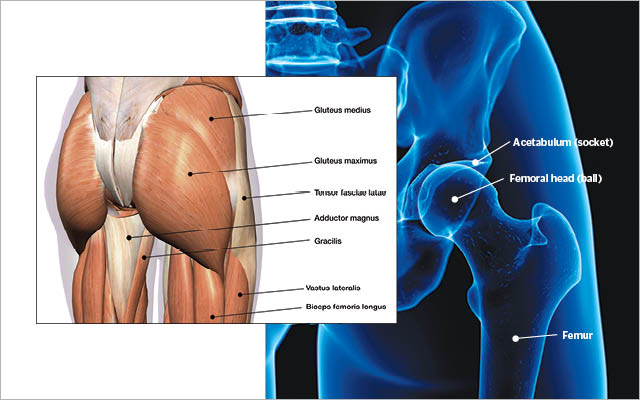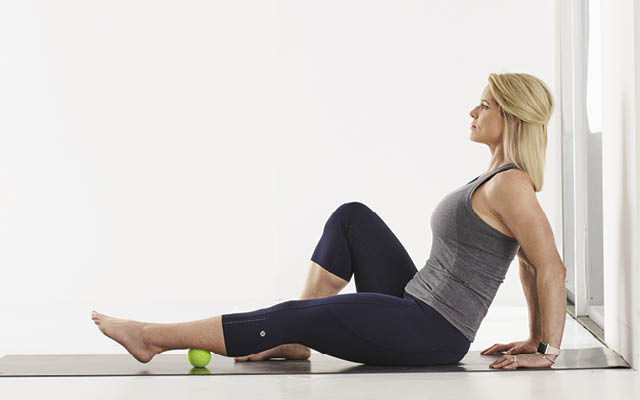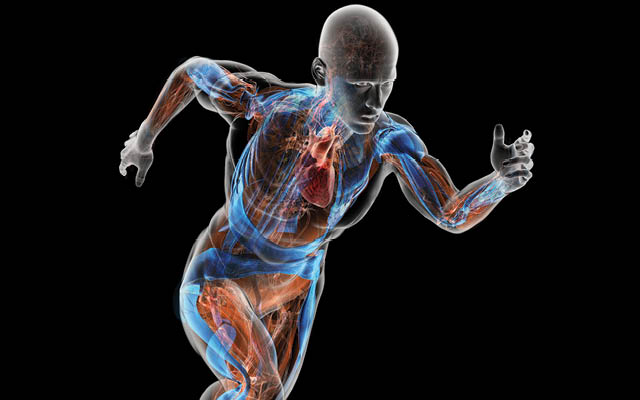The hips are a central component of the body’s kinetic chain — the system of bones, joints, nerves, muscles, and fascia that work together to move the body. And they do a lot of heavy lifting.
In fact, they help power nearly every move you make, explains Deb Lensing, DPT, OCS, a physical therapist at Life Time’s LifeClinic in Chanhassen, Minn.
Your hips are composed of two ball-and-socket joints, created where the top of the femur, or thighbone, fits into the acetabulum, or hip socket. This is a setup that allows for multidirectional movement and rotation, including flexing (bending) and extending (straightening) your legs; bringing your legs in (adduction) or away from (abduction) your body; and rotating your legs internally and externally.
In other words, when it comes to controlling your lower limbs, the hips are the boss. Let’s take a closer look.
Hip and Glute Anatomy
- Your primary hip muscles include the glutes (gluteus maximus, medius, and minimus), hip flexors (a group of muscles that allow you to lift your leg), adductors (the inner-thigh muscles that bring your legs together), and the tensor fasciae latae, or TFL.

- The abductors are the outer hip muscles that move the leg away from the body and help it rotate at the hip joint. They include the TFL, gluteus medius, and gluteus minimus (not shown).
Keep Your Hips Healthy
Pay attention to your glutes, says Lensing. The gluteus maximus is a large muscle with potential for tremendous power, but it’s often weaker than it should be, she notes. The gluteus medius and gluteus minimus — the smaller side-butt muscles — play a major role in stabilization. If they aren’t strong enough, other muscles and joints must compensate.
The complex of hip muscles is connected to various points above and below the actual hip joint. Hip muscles attach to the femur, which leads to the knee, ankle, and foot in your lower half. In the upper half, hip muscles connect to the pelvis, which connects to the spine, and from there to the rib cage, abdomen, shoulders, and neck. In this way, your hip muscles link to — and affect — the rest of your body.
Hip weakness or instability can cause problems everywhere — notably in the lower back, knees, and ankles, explains Jennifer Joslyn, DPT, a physical therapist at Motion Minnesota in Minnetonka, Minn., who specializes in treating lower-back and hip pain. Though it’s easy to blame a sedentary lifestyle for hip weakness, even active people may have weaker hips than they realize.
(See “6 Exercises for Healthy Hips” for moves to prevent and recover from hip issues.)
This originally appeared in “Healthy, Happy Hips” from the October 2020 issue of Experience Life.




This Post Has One Comment
Hips are the most essential part of a human body, as you said when it comes to controlling of lower limbs, the hips are the boss. Generally in the hustle and bustle of our lives we don’t think about things like what effects our hip joints and how much we need to improve them to keep our body fit and working. Thank you, your article will definitely aware people and make them start concerning about it.